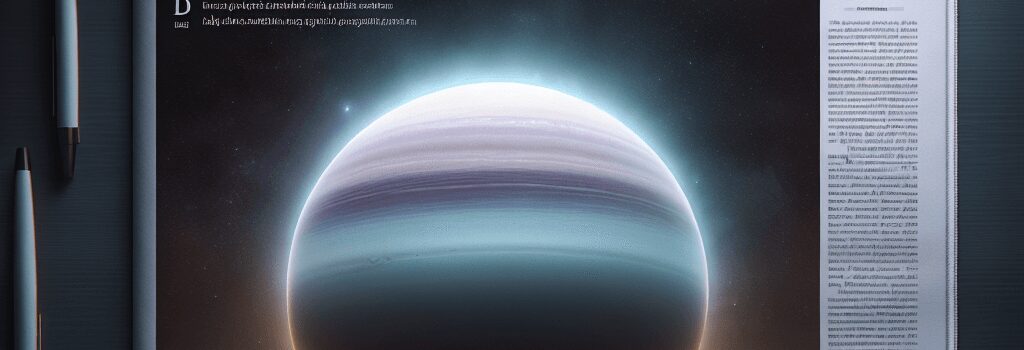Uranus: Two Decades of Spectroscopy Uncover Atmospheric Secrets

Introduction
Uranus, the seventh planet from the Sun, has long fascinated planetary scientists due to its extreme axial tilt and icy composition. Leveraging 20 years of multi-spectral data from NASA’s Hubble and James Webb Space Telescopes, a collaborative team led by the University of Arizona has now mapped the detailed chemical and dynamical structure of Uranus’ atmosphere with unprecedented precision.
Key Findings on Atmospheric Composition
By analyzing images and spectra between 2002 and 2022, researchers have quantified the global and seasonal distribution of major and minor constituents:
- Hydrogen (H₂) and Helium (He): Constitute 98% of the atmosphere by volume, consistent with protosolar ratios within 10%.
- Methane (CH₄): Present at 2–3% mixing ratio. Absorbs red and near-infrared light, giving Uranus its characteristic pale blue-green hue.
- Trace Ices (H₂O, NH₃): Detected at parts-per-million levels through far-infrared and submillimeter spectroscopy with JWST and ground-based facilities such as ALMA.
“These results refine the bulk composition models and provide key benchmarks for understanding ice-giant formation in our Solar System and exoplanetary systems,” says Dr. Maria Perez, co-author and atmospheric physicist at the Lunar and Planetary Laboratory.
Instrumental Techniques and Data Analysis
Hubble Space Telescope Observations
- Advanced Camera for Surveys (ACS): Provided high-resolution visible-light imaging to track ring geometry and albedo changes.
- Space Telescope Imaging Spectrograph (STIS): Delivered pseudo-color methane-band maps by combining 0.3–1.0 µm data.
James Webb Space Telescope Contributions
- NIRSpec and NIRCam: Measured CH₄ features at 1.6–2.2 µm with spectral resolving power R≈1000.
- MIRI: Probed thermal emissions at 5–28 µm, constraining vertical temperature profiles and aerosol optical depths.
Data were processed using radiative transfer models (e.g., DISORT and Nemesis) to retrieve vertical profiles of gas abundances and aerosol layer properties.
Seasonal Aerosol Dynamics
Thanks to Uranus’ 98° axial tilt, polar regions experience decades-long seasons. The team’s four snapshots reveal:
- 2002 (South Spring): Clear south polar atmosphere with low aerosol scattering (optical depth τ≈0.01).
- 2012 (Equinox): Emergence of high-altitude hazes (τ≈0.05) at northern mid-latitudes as sunlight increases.
- 2022 (North Summer): Thickened north polar clouds with τ up to 0.1, while the south pole clears.
The observed aerosol build-up is consistent with photochemical production of hydrocarbons and condensation nuclei, modulated by insolation and meridional circulation.
Implications for Planetary Formation and Climate Models
These findings inform several theoretical frameworks:
- Protosolar Disk Enrichment: The elevated C/H ratio supports scenarios of late-stage accretion of solid ices.
- Axial Tilt Origin: Detailed thermal maps lend credence to the giant-impact hypothesis, which explains Uranus’ near-sideways spin.
- Comparative Planetology: Similar methane-driven coloration on Neptune and exoplanet ice giants suggests universal atmospheric processes.
Future Missions and Observational Prospects
Building on these results, mission concepts currently under study include:
- Uranus Orbiter and Probe (UOP): A flagship mission proposed to launch in the early 2040s. It would deploy an in situ entry probe to directly sample gas and dust, measuring noble gases and isotopic ratios.
- High-Resolution Ground-Based Campaigns: Utilizing next-generation Extremely Large Telescopes (ELTs) to monitor seasonal changes in ices and aerosols with R>10,000 spectroscopy.
Conclusion
After two decades of multi-spectral observations, the atmospheric architecture of Uranus is now substantially constrained. These insights not only deepen our understanding of ice-giant physics but also guide the design of future spacecraft missions poised to unravel the remaining mysteries of this tilted world.